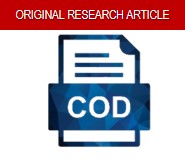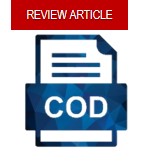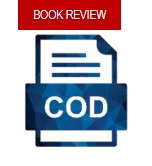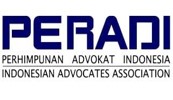Interfaith Marriages in Brambaken Village
Legal Ambiguities and Sociocultural Dynamics in Biak Numfor Regency
DOI:
https://doi.org/10.46924/jihk.v5i1.216Keywords:
Interfaith Marriages, Legal Ambiguities, Sociocultural DynamicsAbstract
This research examines interfaith marriages in Indonesia, with a specific focus on Brambaken Village, Samofa District, Biak Numfor Regency. Marriage is regarded as a sacred bond that must adhere to the religious laws of each party, as stipulated in Article 2, paragraph (1) of Law No. 16 of 2019, in conjunction with Law No. 1 of 1974 concerning Marriage. Despite this, interfaith marriages continue to occur in society, even though they are not explicitly regulated by this law, leading to legal uncertainty. The objective of this research is to assess the validity of interfaith marriages under current legal frameworks and to identify the factors that contribute to the prevalence of interfaith marriages in the Biak Numfor Regency. Employing an empirical juridical approach, this study utilizes primary data from interviews and secondary data from literature reviews. The findings indicate that interfaith marriages persist as a social phenomenon despite legal ambiguity, driven by complex social and cultural factors such as the dominance of syncretic cultural practices, secularism, religious formalism, disproportionate tolerance, and the presence of premarital children.
Downloads
References
Arsyita, Muhammad Aprizal, Damrah Khair, Erina Pane, A. Kumedi Ja’far, and Siti Mahmudah. “Smuggling of The Law in Different Religious Marriage as A Legal Action in The State of Pancasila.” Smart: Journal of Sharia, Tradition, and Modernity 1, no. 1 (2021): 16–48. http://dx.doi.org/10.24042/smart.v1i1.9781.
Dardiri, Ahmadi Hasanuddin, Marzha Tweedo, and Muhammad Irham Roihan. “Pernikahan Beda Agama Ditinjau Dari Perspektif Islam Dan Ham.” Khazanah: Jurnal Mahasiswa 6, no. 1 (2013): 99–117. https://doi.org/10.20885/khazanah.vol6.iss1.art8.
Hastuti, Indira, Edy Sanjaya, and Budi Prasetyo. “Interfaith Marriage And Its Legal Consequences For Children Born According To Islamic Law.” International Journal of Educational Research and Social Sciences 3, no. 1 (2022): 509–17. https://doi.org/10.51601/ijersc.v3i1.303.
Makalew, Jane. “Akibat Hukum Dari Perkawinan Beda Agama Di Indonesia.” Lex Privatum 1, no. 2 (2013): 131–44. https://ejournal.unsrat.ac.id/index.php/lexprivatum/article/view/1710.
Mariani, Mariani. “Kedudukan Perkawinan Beda Agama Dan Perkawinan Campuran Di Indonesia.” Al-Banjari 19, no. 1 (2020): 84–111. https://doi.org/10.18592/al-banjari.v%vi%i.3821.
Muntaqo, Lutfan. “Islamic Thoughts on Interfaith Marriage in Local and Global Context.” Manarul Qur’an: Jurnal Ilmiah Studi Islam 20, no. 1 (2020): 69–79. https://doi.org/10.32699/mq.v20i1.1615.
Safarin, Muhammad Habiby Abil Fida, and Fatimah Fatimah. “Polemics on Interfaith Marriage: Law and Civil Law Perspectives.” Unifikasi: Jurnal Ilmu Hukum 8, no. 2 (2021): 262–71. https://doi.org/10.25134/unifikasi.v8i2.5166.
Sarah, Rima. “An Analysis Of Extrinsic Elements In The Collection Of Short Stories Berjuta Rasanya by Tere Liye.” Vivid: Journal of Language and Literature 11, no. 2 (2022): 119–26. https://doi.org/10.25077/vj.11.2.119-126.2022.
Setiyanto, Danu Aris. “Perkawinan Beda Agama Pasca Putusan Mahkamah Konstitusi Nomor 68/PUU-XII/2014 Dalam Persperktif HAM.” Al-Ahwal: Jurnal Hukum Keluarga Islam 9, no. 1 (2016): 13–30. https://doi.org/10.14421/ahwal.2016.09102.
Suhasti, Ermi, Siti Djazimah, and Hartini Hartini. “Polemics on Interfaith Marriage in Indonesia between Rules and Practices.” Al-Jami’ah: Journal of Islamic Studies 56, no. 2 (2018): 367–394. https://doi.org/10.14421/ajis.2018.562.367-394.
Wahyuni, Sri. “Pelaksanaan Perkawinan Campur Beda Agama Di Daerah Perbatasan Sambas Kalimantan Barat: Antara Living Law Dan Hukum Positif Indonesia.” Al-Ahwal 9, no. 1 (2016): 31–46. https://doi.org/10.14421/ahwal.2016.09103.
Zahara, Muhyidin Ayu. “Pencatatan Perkawinan Beda Agama: Studi Komparatif Antara Pandangan Hakim PA Semarang Dan Hakim PN Semarang Terhadap Pasal 35 Huruf (a) Undang-Undang Nomor 23 Tahun 2006 Tentang Administrasi Kependudukan.” Diponegoro Private Law Review 4, no. 3 (2019): 1–15. https://ejournal2.undip.ac.id/index.php/dplr/article/view/6545.
Thesis
Chandera, Nafdin Ali. “Pencatatan Perkawinan Beda Agama Di Kantor Dinas. Kependudukan Dan Penc Atatan Sipil Kota Yogyakarta.” Universitas Islam Negeri Sunan Kalijaga, 2016. https://digilib.uin-suka.ac.id/id/eprint/20700/.
Hasin, Atabik. “Masuk Islam Karena Alasan Perkawinan: Studi Kasus Perkawinan Pasangan Yang Semula Beda Agama Di Desa Borangan Kecamatan Manisrenggo Kabupaten Klaten.” Universitas Islam Negeri Walisongo, 2015. https://eprints.walisongo.ac.id/view/creators/Hasin=3AAtabik=3A=3A.html.
Books
Darmabrata, Wahyono. Hukum Perkawinan Perdata: Syarat Sahnya Perkawinan Hak Dan Kewajiban Suami Istri Harta Benda Perkawinan. Jakarta: Rizkita, 2009.
Downloads
Published
Issue
Section
License
Authors who publish with this journal agree to the following terms:
- Copyright on any article is retained by the author(s).
- The author grants the journal, the right of first publication with the work simultaneously licensed under a Creative Commons Attribution License that allows others to share the work with an acknowledgment of the work’s authorship and initial publication in this journal.
- Authors are able to enter into separate, additional contractual arrangements for the non-exclusive distribution of the journal’s published version of the work (e.g., post it to an institutional repository or publish it in a book), with an acknowledgment of its initial publication in this journal.
- Authors are permitted and encouraged to post their work online (e.g., in institutional repositories or on their website) prior to and during the submission process, as it can lead to productive exchanges, as well as earlier and greater citation of published work.
- The article and any associated published material is distributed under the Creative Commons Attribution 4.0 International License



 Sinta ID:
Sinta ID: 


















